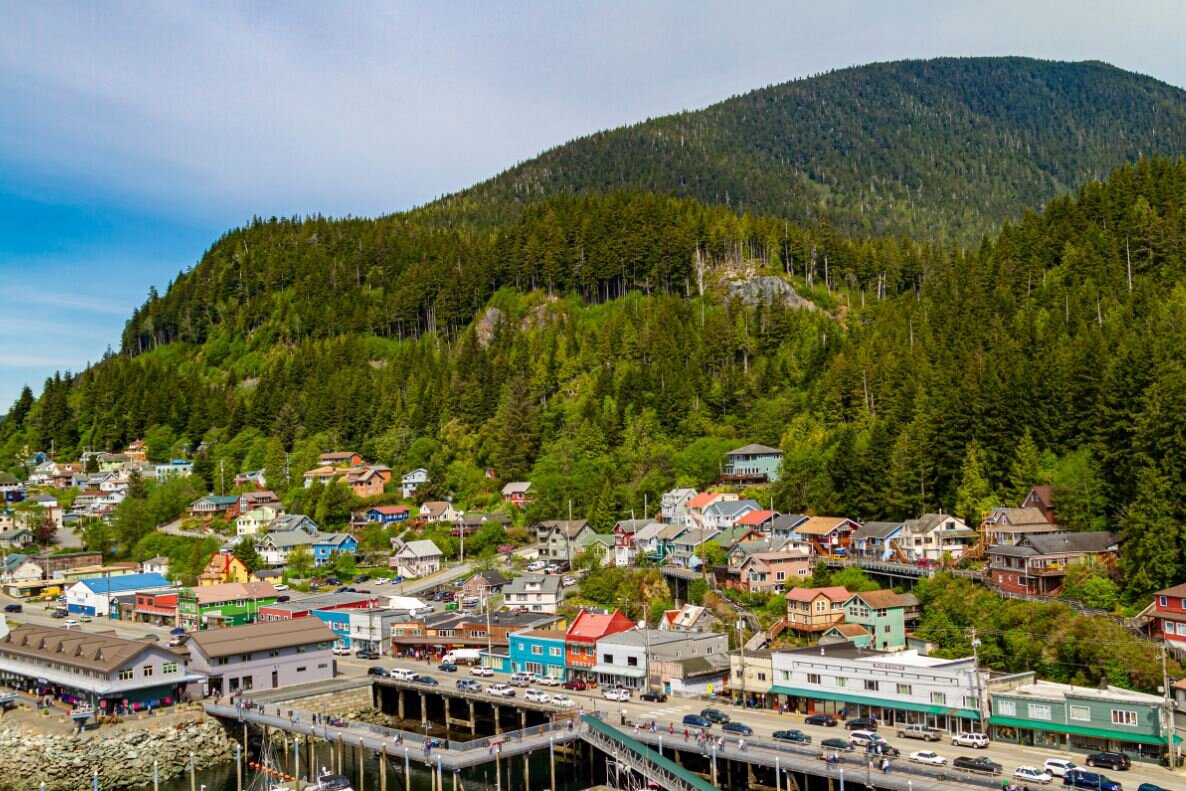On the Road with Hannah, Part 5: Southeast
By Hannah Pembroke
Hello, animal lovers! For our final journey along our tour of the regions of Alaska, we will be exploring the unique names and wildlife in the Southeast. With some of the most abundant sea life of the state, it comes as no surprise that several of the towns, villages, and cities throughout the Southeast are named after aquatic animals. Our three stops this week include Pelican, Whale Pass, and Ketchikan.
Pelican
Photo credit: Highliner Lodge
Despite being home to one of Alaska’s largest brown bear populations, our first stop has an aerial-themed name. The name “pelican” came from the ship Pelican, which carried the first settlers into the Lisianski Inlet. Pelican is a young city, given its western name officially in the late 1930’s, however the land has been home to wildlife and Tlingit people long before that. Originally named K'udeis'x̱'e by the Tlingit people, the area is abundant with animals, aquatic, aerial, and otherwise. The long list includes: Humpback whales, Orca whales, porpoises, Sea Lions, Harbor seals, Sea otters, Bald eagles, Grizzly bear and Sitka Blacktail deer. However, it is the commercial fishing that keeps this town busy and supports the economy. In fact, Pelican is located right on the Lisianski Inlet, and has earned the motto of being “closest to the fish.'' It is also considered the first stop when touring the Chichagof & Yakobi Island Wilderness Area, which makes it a great first stop on this trip!
Whale Pass
Photo Credit: The Lodge at Whale Pass/Frontiers Travel
As a small community of barely over 70 people, Whale Pass leaves plenty of land and space for animals. As the name implies, Whale Pass presents amazing opportunities to watch humpback and orca whales cross the 10-mile-long strait between Thorne Island and Prince of Wales Island. As it is such an isolated area, with the first road connections from outer areas beginning in the 1980s, the community largely relies on fishing as a food source. Whale Pass is situated on Whale Passage and began as a logging camp. When visiting, the long history and relationship the Alaska Natives have with fishing is visible along the salmon streams. If you know where to look, Ancient Alaska Native fish traps and petroglyphs can be seen. This relationship between survival and subsistence is still present today. Neck Lake, which is just outside of Whale Pass, has a salmon hatchery that supports the Coho salmon population. These fishing and wildlife maintenance practices allow for an abundance of fishing that supports the human population. In addition to the wonderful sea life, there are plenty of animals to look for on land, including Black bear, Sitka Blacktail deer, Gray wolves, and mink. The rivers are also home to beavers and otters!
Ketchikan
While Ketchikan is a familiar name among local Alaskans, its history is less well known. One popular theory is that it comes from the Tlingit word for creek, however, another common origin story is that the name means “thundering wings of an eagle.” The ambiguity of Ketchikan’s etymology comes from the lack of clear translation from the land’s Tlingit name, Kitschk-hin. Despite the two potential meanings, the respect given by the name for the land and animals who inhabit it remains the same. While the word “creek” may not have an immediate connotation with animals, the abundance of salmon in Ketchikan serves as the basis for a vibrant ecosystem. The more romantic meaning of “thundering wings on an eagle” offers a very clear and dramatic image of the local wildlife. The potential name-sake Bald eagle is not the only impressive predator on the island, as black bears and wolves also roam the land. Home of several totem pole parks, the Ketchikan community maintains a spirit of reverence for their wildlife neighbors. This city was built on the understanding and respect for animals, which makes it the perfect last stop for our series!
Thank you for checking in this week for the Southeast leg of our journey! As always, it is a privilege and joy to experience the land around us and to witness wildlife in its natural habitat. If you are interested in aiding our goal of protecting Alaskan wildlife, please take action and visit AWA at https://www.akwildlife.org/take-action-1. See you for our next mini series, when we are back on the road with Hannah!





